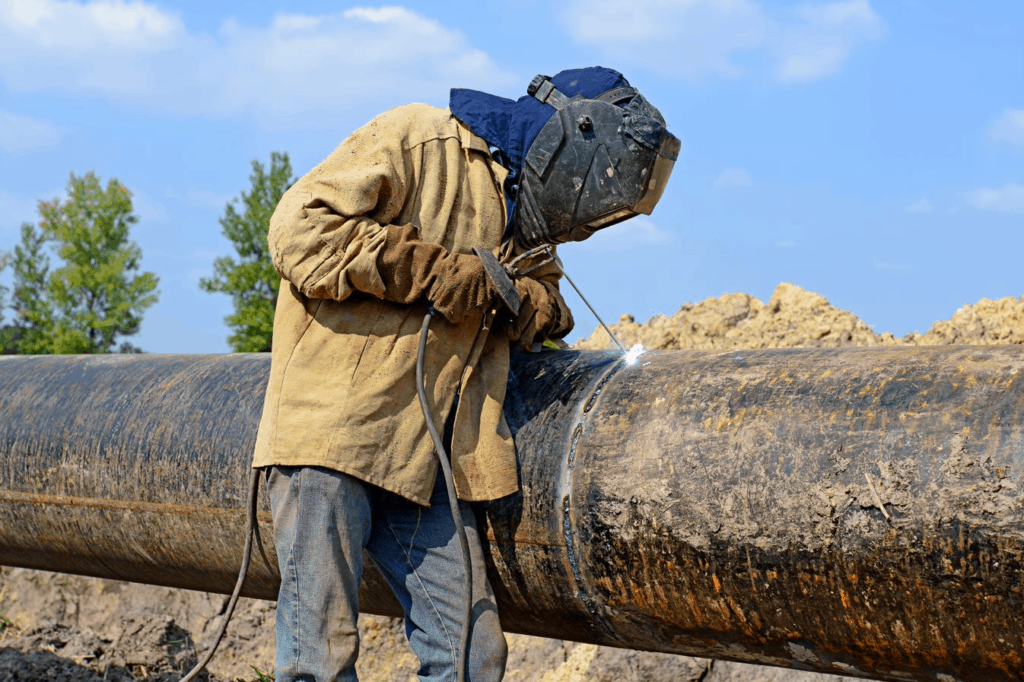What Are the NDT Standards for Welding?

When it comes to NDT standards for welding inspections, many guidelines largely stem from level III experts who get involved with submitting techniques and safety guidelines to various governing bodies, such as The American Society for Nondestructive Testing (ASNT), International Standard for Organization (ISO), and the American Petroleum Institute (API), to name a few. The standards submitted cover a wide array of NDT techniques, such as visual testing (VT), ultrasonic testing (UT), eddy current testing (ECT), liquid penetrant testing (LPT), and radiographic testing (RT). The organizations behind NDT standards are a collection of agencies that levy the appropriate regulations.
Many of the standards are mandated by law and company policy, but the early detection of potential hazards is the most important function of these regulations. This article will focus on three important organizations: ASNT, ISO, and API.
The American Society for Nondestructive Testing
The ASNT is a technical society that has been around for half a century, promoting vital NDT standards nationally and internationally. It’s also a central body that certifies NDT personnel and offers specialty courses that allow analysts to advance to higher levels.
The ASNT is not a government organization, nor is it an institution that mandates NDT protocols. Rather, the stellar reputation and strict training protocols with which it is associated have made the organization an authority within the industry. Many employers use ASNT certification to assess the credibility of NDT analysts. If NDT analysts are looking for core NDT welding standards, the ASNT is an important organization that provides strict applications and safety procedures for a variety of NDT specialties.
Overall, the organization offers training in levels I, II, and III. Trainees can get certified in the following fields:
- UT
- VT
- ECT
- LPT
- MPT
- Radiography
The SNT TC-1A, for example, provides guidelines for employers wishing to establish in-house certification in all three NDT levels, with each level depending on additional experience and training. Regardless of the certification program, trainees must usually pass general written, specific written, and practical exams. Regardless of the institution, students must demonstrate visual acuity, including proficiency in color vision and the ability to distinguish between various shades of gray.
The International Standard for Organization
The ISO is an international standards-setting body. It is an independent, non-governmental organization that officiates NDT protocols and strategy. Like the ASNT, the ISO is a central body that ultimately publishes standards from experts around the world. A new standard typically begins when experts from an industry sector or group contact the ISO. For NDT, the experts are usually level III analysts who have identified the need for and ultimately developed a technique. If analysts are looking for the latest standards, they can look to level III personnel who regularly create new safeguards and updated safety protocols.
When a professional group brings a new standard to light, technical committees convene to scrutinize its viability. A team of experts will discuss various aspects of the standard, such as:
- Content
- Key definitions
- Scope
The team of experts consists of personnel from academia, government agencies, and/or consumer associations. The ISO not only establishes safety guidelines for NDT but also for other industries, such as agriculture.
When it comes to NDT, one major standard is the ISO 9712:2012. This standard covers proficiency in a variety of NDT fields, including ultrasonic and eddy current testing. Analysts can defer to the ISO website to find more ISO standards.
The American Petroleum Institute
The API also offers the same courses in a wide array of NDT specialties. It retains over 500 recommendations and practices within a variety of industries, most notably oil and gas. Due to NDT applications within multiple industries, the practices of API make the organization a guiding light in NDT safety procedures. Many API practices are also adopted by outside bodies, such as the ISO.
When it comes to NDT, some notable API practices include:
- API RP 572: Pressure Vessel Inspection
- API RP 577: Inspection, Welding, Metallurgy
- API RP 580: Risk-based Inspections
In particular, the API also offers a program in phased array ultrasonic testing (PAUT), covering the inspection of defects within low-alloy and carbon steel welds. PAUT is a powerful modern ultrasonic scanning technique that improves on traditional UT techniques, offering benefits such as enhanced sizing mechanisms, multiple probe angles, and beam steering. Companies seeking to improve the efficiency of their weld scans can trade outdated equipment for newer PAUT solutions with which to certify company technicians.
Any applicant who is certified at level II or III will qualify for the API PAUT exam. Certifying technicians ensures competence in the latest, most efficient NDT techniques.
Why NDT Standards for Welding Inspections Matter
NDT standards for welding inspections should be a vital part of the training for level II or level III analysts. Level I personnel cannot advance to higher levels without learning core safety standards that streamline the testing process. From there, advanced analysts can also play an integral role in creating new standards and submitting them to the appropriate institutions for review.
Organizations such as the ASNT, ISO, and API are primary organizations that uphold NDT standards and provide specialized training. They also certify students on an individual basis, helping companies find the right personnel based on the required NDT service. These organizations uphold some of the most important safety standards; as such, understanding of, and compliance with, these standards is key to preventing hazardous situations from developing and ensuring safe, effective operations.
Zetec is a leading provider of modern, innovative ultrasonic and eddy current testing equipment and software. Contact us today to learn more about how we can help you meet even the most stringent NDT standards for welding and more.





